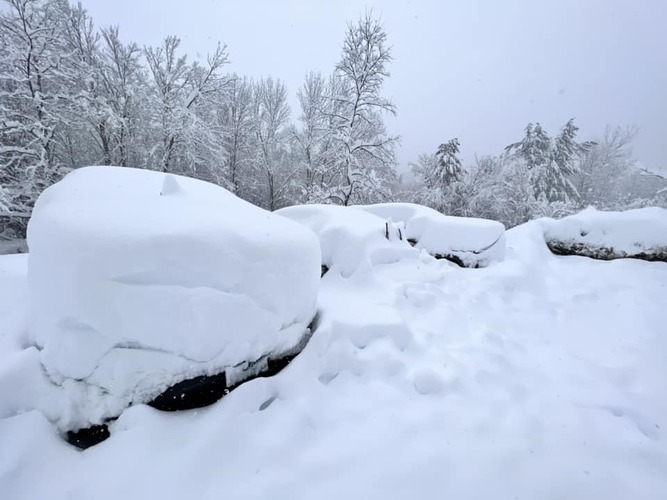It was the biggest March snowstorms in Vermont in many years and, after leaving anywhere from a few inches in downtown Brattleboro to a few feet in the higher elevations of Windham County, it took days for life to return to normal.
Elevation had a great deal to do with how much snow that Windham County towns received in the nor'easter that hit the area from March 13-15, which left many people without power for days.
According to the National Weather Service (NWS) office in Albany, New York, 41.6 inches of snow was reported by a cooperative weather observer 6 miles west of West Brattleboro.
Wilmington and Marlboro both recorded 36 inches of snow, while East Dover saw 30 inches of snow and Athens got 25 inches of snow. Rockingham and Dummerston also got around 20 inches of snow, while Putney and outlying areas of Brattleboro received 16-18 inches.
The heavy wet snow, combined with wind gusts between 20-30 mph, took down trees and power lines and left many towns without power for several days.
Green Mountain Power said it brought in 500 additional tree and line crews from all over the country to help in the power restoration effort. At the height of the storm on March 14, about 83,000 GMP customers statewide - more than 32,000 in Windham County - were without service.
By the end of the day on March 17, fewer than 2,000 customers were still in the dark, and it took all day on March 18 to finally restore power to all but around 100 homes. Guilford was the last town in Windham County with a substantial number of outages by the morning of March 19, just shy of a week after the snow started falling.
The large number of trees brought down by the gloppy snow complicated matters for utility workers. According to Brattleboro Town Manager John Potter, 48 roads were obstructed by fallen trees and power lines in the immediate aftermath of the storm on March 15, with 81 recorded incidents.
Brattleboro Public Works and the Brattleboro Fire Department worked through the days and nights on March 14-16 to reopen roads and respond to emergency calls. By March 18, only Fox Farm Road and Barrows Road were still closed to traffic.
“The town is fortunate to have such dedicated professionals responding to emergency situations with care, attention, and commitment to the safety and welfare of Brattleboro residents and visitors,” Potter said in a news release.
In Brattleboro, the American Red Cross opened a shelter on March 15 at Brattleboro Union High School. According to a news release, about 30 people visited the shelter on March 15, and three people stayed overnight. The Red Cross closed the shelter at the end of the day on March 16.
The Brattleboro Senior Center and Brooks Memorial Library were used as day shelters, as well as charging stations for electronic devices, in the aftermath of the storm.
In Dummerston, town road crews were unable to plow some roads until March 16. According to Road Foreman Lee Chamberlain, GMP would not allow plows to go through until they were able to determine it was safe to do so. He said that any travel on these unplowed roads was possible, but strictly at one's own risk.
Vermont State Police were kept busy during the storm dealing with motor vehicle crashes.
According to a news release, state police responded to 206 crashes statewide between midnight on March 14 and 4 p.m. on March 15. Ninety-nine of those crashes were in southern Vermont, and nearly half of the crashes occurred on Interstates 89 and 91.
Flood concerns?
Despite the huge amount of snow that fell in the storm, the NWS-Albany office said on March 16 that “there is good confidence that the snowmelt flood threat remains low,” thanks to “an orderly melt of snowpack and modest within-bank rises on creeks and streams.”
According to NWS-Albany, the warmer-than- normal winter meant that even with 4 feet of snow falling on high elevation areas in southern Vermont, it merely brought the snowpack levels to the normal level for mid- to late-March.
Those warm temperatures also reduced the threat of ice jams on streams and rivers, the weather service said.
